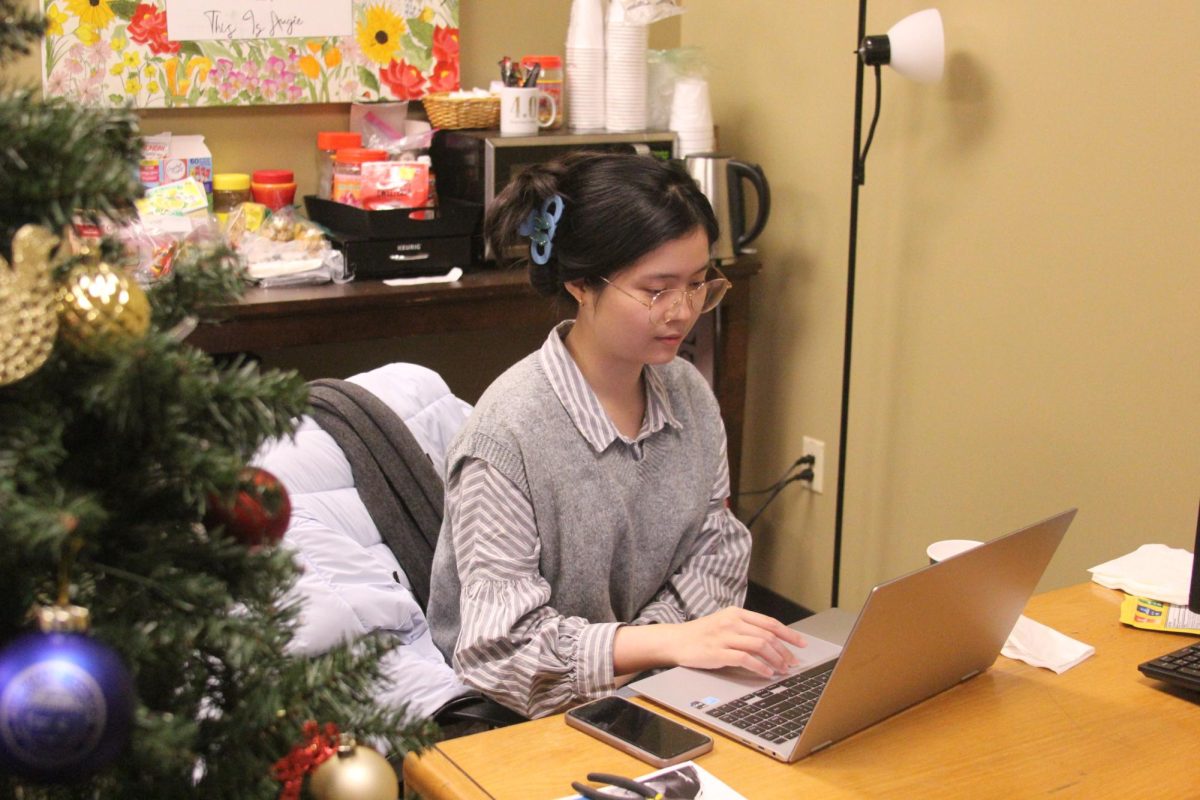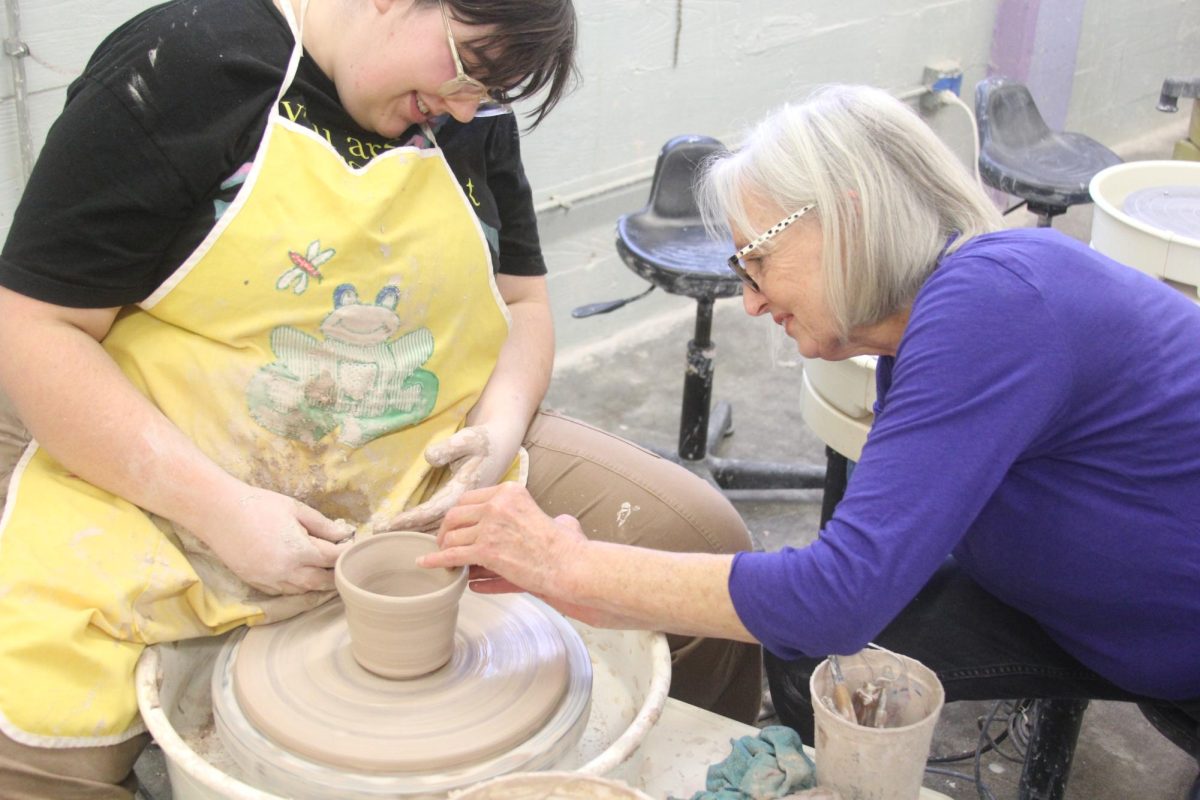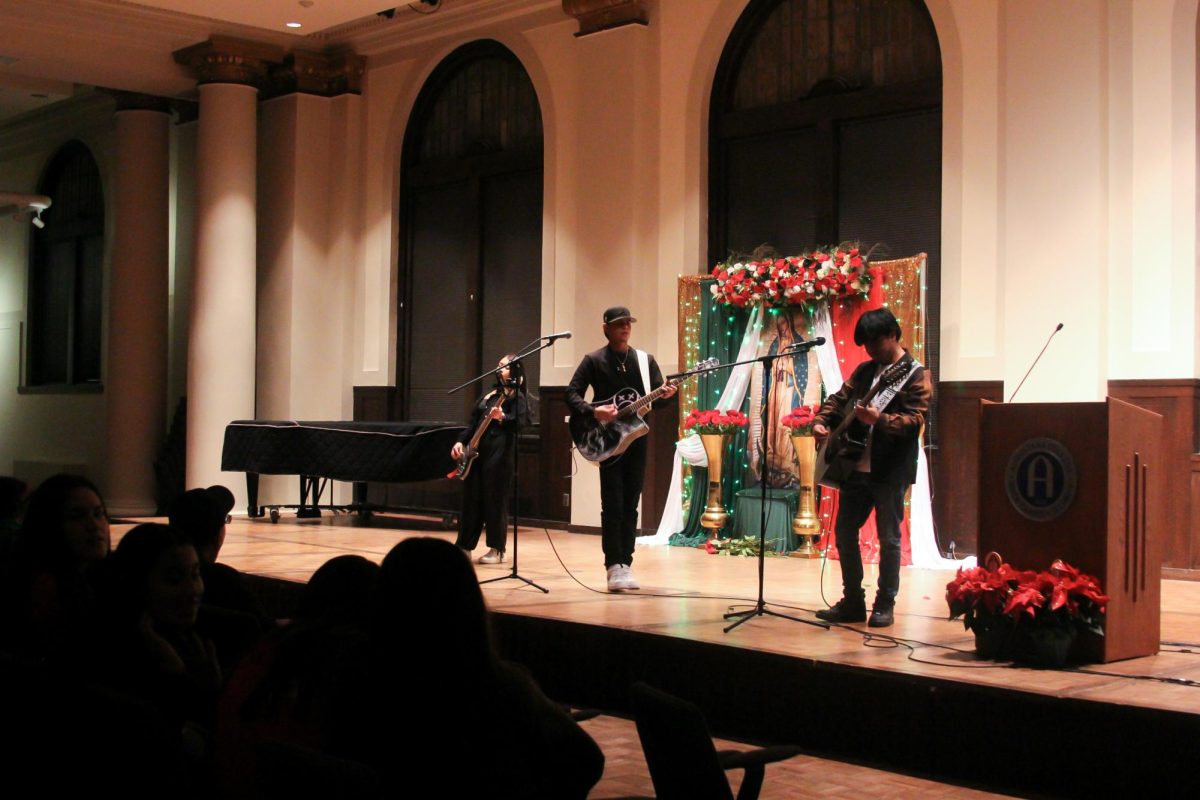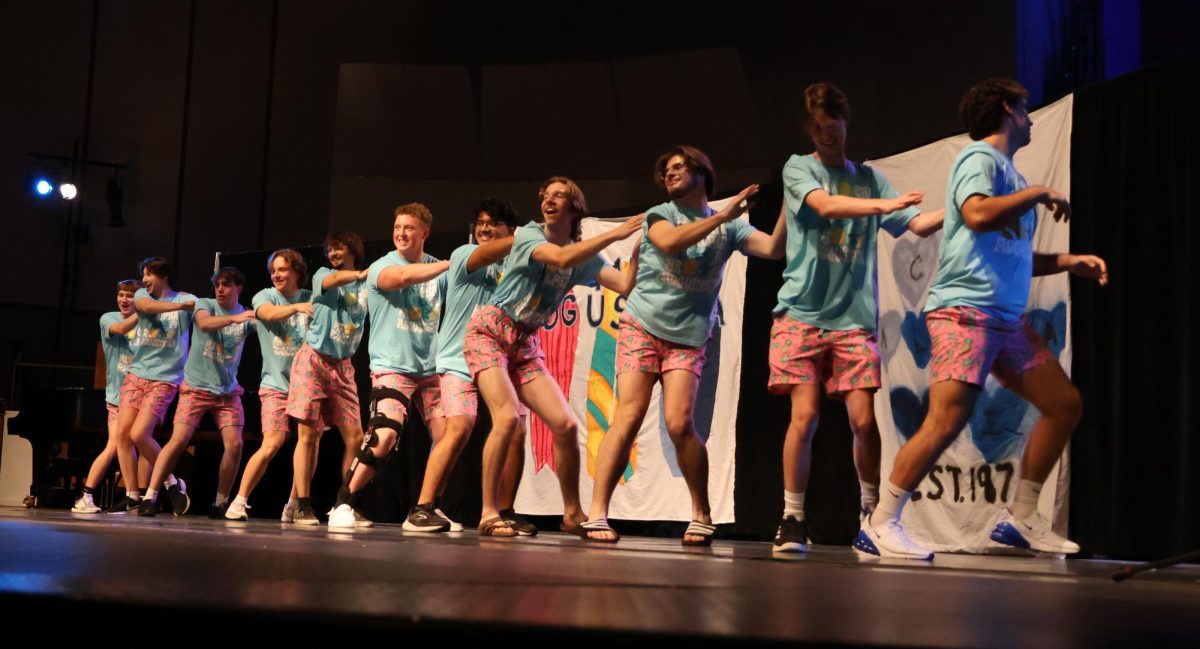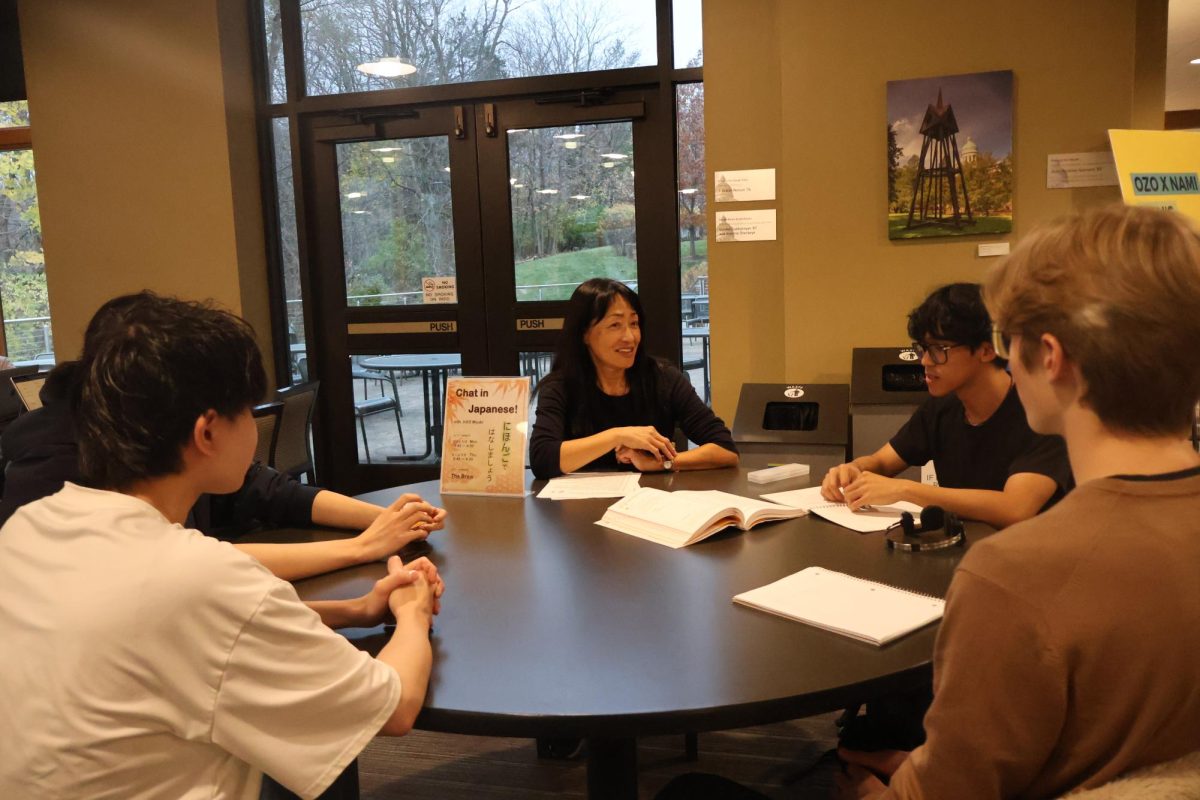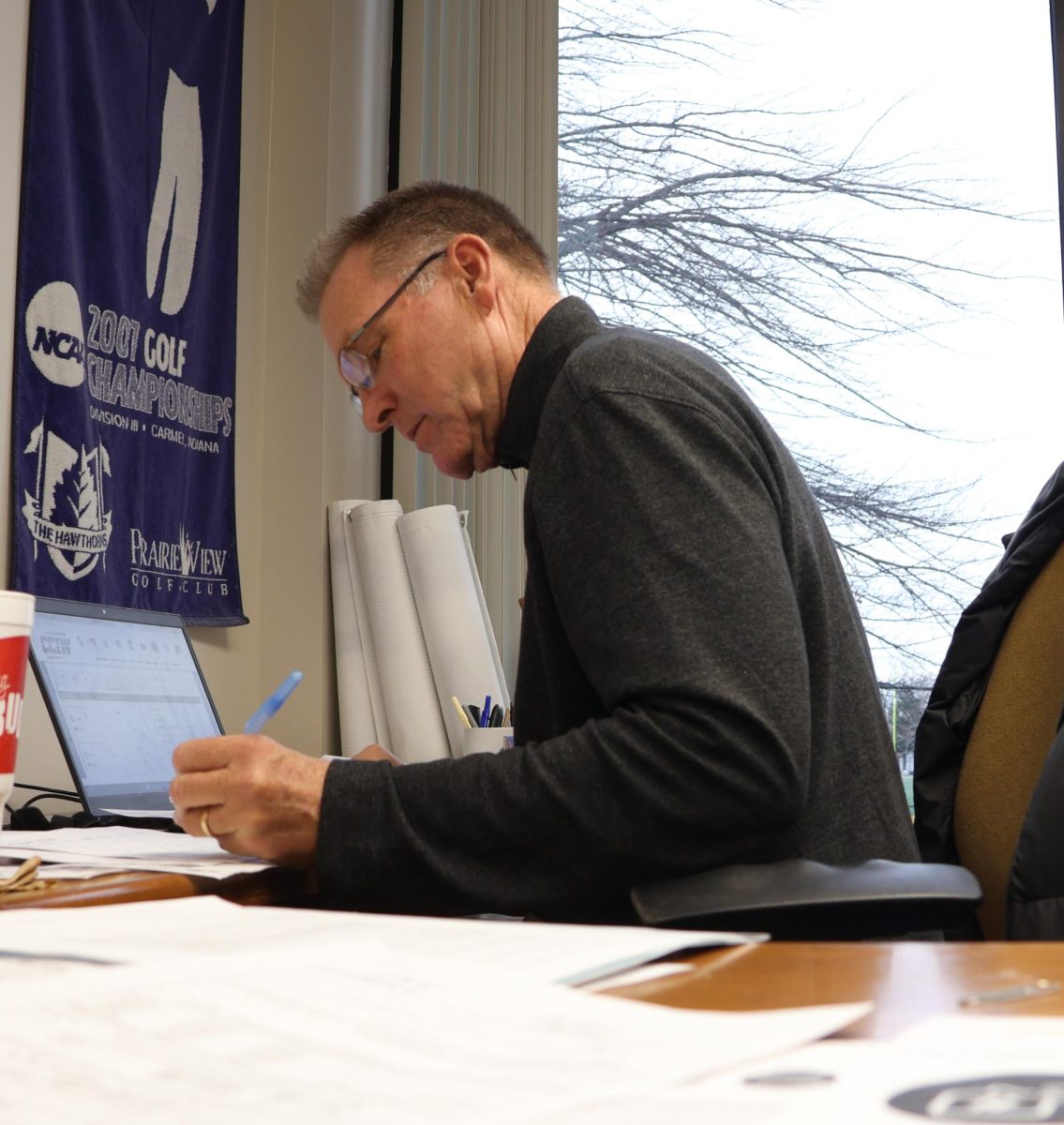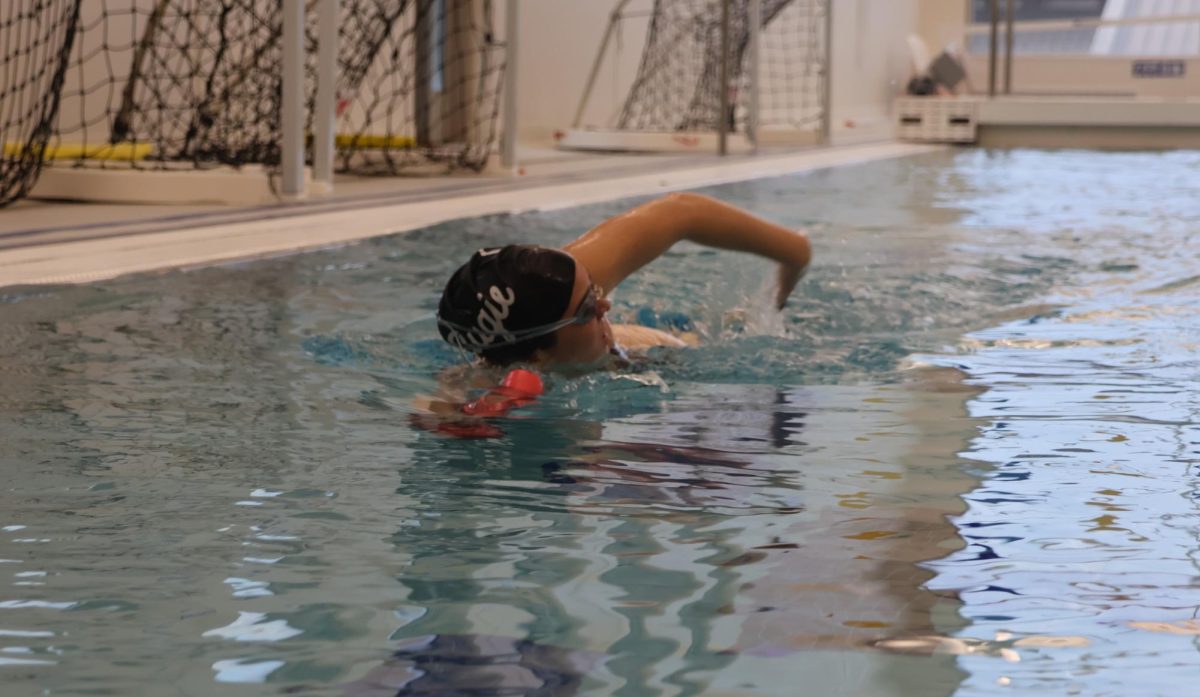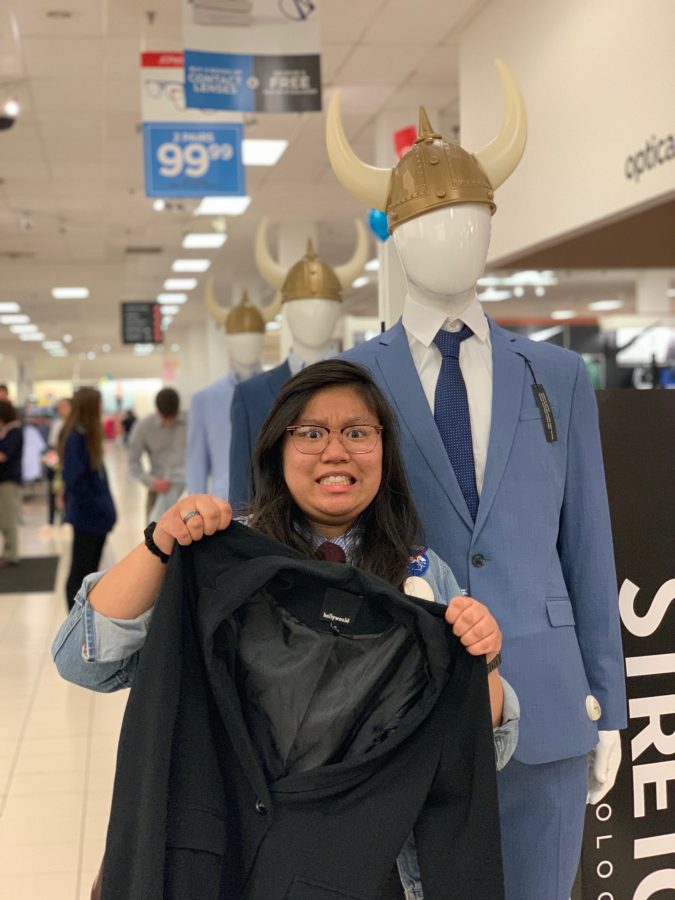With the trepidation of a freshly-hired intern, I expected a panel of critics at JCPenney’s “Suit Up” event to hand us a list of all the clothes we couldn’t wear.
I pictured some woman in a pantsuit telling me I wouldn’t be going to Hollywood à la American Idol because my belt wasn’t the same shade as my shoes as my family cried in the corner. “Why didn’t she use the swatches we gave her?” My mother would cry, “We had her tested for color blindness!”
Instead, I met a celebration of professional image in the jauntily decorated Viking mannequins and golden-blue balloons. With 40% off already discounted prices, JCPenney professional clothes drew Augie students like a knight’s first challenge: find your armor and you can enter the workplace arena relatively unscathed. Without judgment and in comfort, I took up the challenge.
According to Laura Kestner-Ricketts, executive director of career and professional development, 160 people registered for the event. More than 200 attended, making “Suit Up” comparable to larger-scale events like the annual Career Fair and Grad School Fair.
Kestner-Ricketts, formerly of Marquette University, introduced JCPenney’s partnership after success with “Suit Up” at her last school. She said OSL, CORE, and other student groups fundraised about $4,000, which was enough to give 80 “mini-grants” to 50 students.
This was opportunity to enter the elite ranks of the professional world under an affordable shield.
For first-year students like Yesenia Villegas, professional wardrobes consist of one outfit: usually a nice shirt and pants that aren’t denim.
“I bought a blazer that cost me half an eye once because I thought I’d need it eventually,” Villegas said. “It was a struggle to find shoes that fit my outfit. I think dressing up shows you take it seriously, which makes a good impression.”
“Suit Up” achieved an easy introduction to professionalism that came with markdown price tags and salespeople who were encouraging and personable – everything you don’t associate with a job interview.
Where fear of the future and our own inadequacy regularly keeps us from appointments in the CORE office, the event was successful because it didn’t identify what we lacked. It was a study group in identity, helping us showcase our best strengths in professional appearance.
In every aisle of clothes, you’d find elementary ed students trying on clinical clothes or philosophy majors looking for multi-purpose outfits.
CORE representatives tried on heels and sought student feedback. I even had a conversation with a friendly stranger in the fitting room over his haul: a $300 suit for $40. “I never had the money to buy clothes like this,” he said. “This is an entirely foreign situation, but I like it.”
It was a giggling, encouraging affair with friends, hunting for our own professional armor among the hangers.
Every now and then I’d hear something like “I don’t know what size I am in ‘adult’” or “Does this color make me look old?”
We were learning how to dress again together, navigating belt-color coordination and scheduling haircuts for 20% off. We shared a camaraderie in a unified struggle: seeking to find a more put-together, winsome, employable version of ourselves.
“Suit Up” lowered the barriers of class and age for an hour when it extended its reach to Augustana that Saturday. It was a workshop on showing yourself in your best way.
As an androgynous-dressing professional, I felt torn as I eyed the different departments. Should I go to the men’s or women’s section? Would wearing a blazer and tie keep me from getting hired or accepted into a grad program?
I posed the question to Erica Ewert, a first-year CORE representative of employer relations, and got the answer I didn’t know I needed.
“You have to be true to who you are. Any institution or employer who says ‘no’ – you don’t want to be there,” Ewert said. “Don’t try to be someone you’re not when you’re choosing professional clothes. There are so many opportunities and employers who would love you regardless of what you wear.”
Stepping into the men’s section and getting individual help from a genderqueer employee seemed divinely sent after that advice. When I left the fitting room with a bundle of pressed shirts, I understood freedom.
“Suit Up” brought us closer to the comfort of our own skin, an invitation to armor ourselves in button-downs, blouses and shiny shoes.
It was preparation for the professional trial at hand, coming just after graduation. But we’d be ready. It was a challenge that suited us.

